BC Icewine Harvest Second Earliest on Record
For Immediate Release:
KELOWNA, BC (November 12, 2014) – BC’s annual Icewine harvest got off to a very early start this year, with cold temperatures prompting two wineries to start picking grapes on the second earliest day on record.
The earliest harvest on record in BC was November 5, 2003.
While this year’s harvest so far has been limited to just two wineries whose mercury dipped and sustained below the required -8˚C and whose grapes reached the required 35 Brix, there are 29 wineries registered with the BC Wine Authority to pick an estimated 931 standard tons of Icewine grapes on an estimated 235 acres.
For Inniskillin Okanagan this was the earliest Icewine harvest on record. Winemaker Derek Kontkanen said his crew began picking Riesling at 3 AM when temperatures in the Oliver vineyard had reached -12.2˚C. Based on the 40 tons of fruit they brought in, he is expecting the quality of the wine to be very high.
“It is a great way to cap off an excellent year,” says Kontkanen. “Fruit quality was great for the table wines and I can see the great potential in the fruit harvested this morning.”
Another Okanagan-based winery harvested 10 tons of grapes starting at 4 AM when vineyard temperatures reached -9˚C, according to the BC Wine Authority, which regulates Icewine.
Many other Okanagan wineries are closely watching their thermometers and planning to have crews picking for Icewine tonight and tomorrow.
Summerhill Pyramid Winery* in Kelowna, which is planning to start harvest at midnight tonight, says the early season for Icewine is simply an extension of what has been an amazing vintage.
“Icewine is something we can do better here in the Okanagan than anywhere else on earth,” says Ezra Cipes, CEO of Summerhill Pyramid Winery. “To make outstanding Icewine you need to start with outstanding grapes, and 2014 was one of the best Okanagan growing seasons ever. Now to have this cold snap so early in November, and harvest our Icewine grapes before the birds get them is making us all smile and sing around the winery. This is a blessed vintage.”
Jane Hatch, manager of Tantalus Vineyards in Kelowna, says the Icewine harvest is the perfect end to the season.
“Icewine is all about celebration. For the people who grow and make it, it’s a celebration of the end of a very long season,” says Hatch. “For our loyal customers, it’s the ultimate treat to cap off a celebratory occasion with family and friends.”
Echoing the expectations of other Okanagan wineries, Hatch is anticipating a quality harvest when her pickers head out into the vineyard at 4 AM tomorrow morning.
“If all goes according to plan this will be our earliest Icewine pick ever,” she says. “The grapes are in pristine condition and the resulting juice will be clear and very, very pure. I can’t wait to see it finished and in the bottle.”
Wineries that have decided to forgo the Icewine designation have already started picking grapes for Late Harvest wines — a designation that allows wineries to pick grapes ideal for dessert-style wines without having to adhere to the standards of Icewine.
ICEWINE BACKGROUNDER
WINES OF MARKED QUALITY REGULATION FOR ICEWINE
The Wines of Marked Quality Regulation closely control the production of BC VQA Icewine. The key stipulations are that harvesting takes place at temperatures of -8˚C (17.6˚F) or lower, and the pressed grape juice is a minimum of 35 Brix. Artificial refrigeration of grapes, juice, must or wine is strictly prohibited.
Producers must contact the BC Wine Authority to report the time harvesting begins, and to confirm prior reported tonnages and exact areas of vineyard left for Icewine production.
VITICULTURE
Harvest dates: Can be as early as November or as late as February. Producers track weather systems for early warnings of imminent cold weather.
Permitted varietals: All varietals are permitted. The most common are Riesling, Vidal, Ehrenfelser, Pinot Blanc, Pinot Noir, Merlot, Cabernet Franc, and Gewürztraminer, though Zweigelt, Maréchal Foch, Cabernet Sauvignon, Kerner, Lemberger, Oraniensteiner, Gamay Noir, Muscat and Merlot are all used as well.
Viticultural techniques: Most vineyards are netted against predators, particularly birds.
Harvesting method: Principally by hand. Usually takes place during the night or at dawn.
Harvest temperatures: Although regulation states the temperature must be at least -8˚C (17.6˚F), producers often wait for -10˚C (14˚F) or lower before harvesting.
Frequency: The interior is the only area to regularly experience these cold climatic conditions in British Columbia. When temperatures do not fall enough for Icewine harvests, producers often make Late Harvest wines.
ICEWINE VINIFICATION
The following are general production techniques.
Pressing: The frozen grapes are brought as quickly as possible to the winery where they are pressed. One press cycle can last up to six hours.
Yields: Yields can range from 150 to 300 litres per ton (compared to approximately 600 litres per ton for dry table wines).
Fermentation: Temperatures generally range from 15 to 20˚C over a three- to 12-week period, depending on the Brix and strain of yeast. Fermentation is generally stopped using cold temperatures resulting in alcohol levels between 9 and 12 percent.
Acidification: Icewines can be acidified or deacidified.
Yeast: Icewine is inoculated, generally using strong fermenting yeast such as PDM.
Cold and heat stabilization: Icewines are stabilized before bottling.
Filtration: Generally using an earth and a pad filter, as membrane filters can easily clog.
Bottling: Generally within six to nine months of the harvest.
Ageing potential: Icewines, particularly from Riesling, can age for over 10 years but are often preferred young and fresh.







